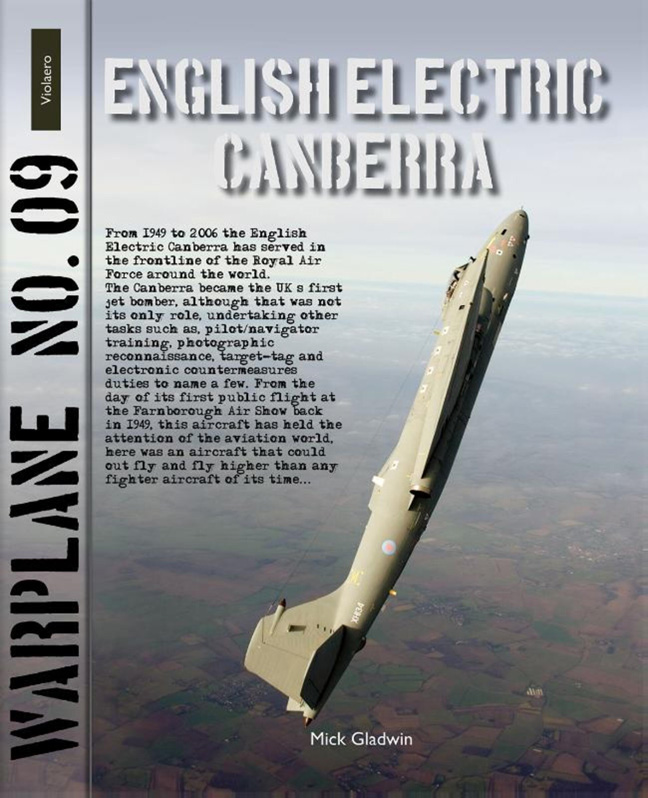Book contents
Summary
From 1949 to 2006 the English Electric Canberra has served in the frontline of the Royal Air Force around the world. The Canberra became the UK’s first jet bomber, although that was not its only role, undertaking other tasks such as, pilot/navigator training, photographic reconnaissance, target-tag and electronic countermeasures duties to name a few. From the day of its first public flight at the Farnborough Air Show back in 1949, this aircraft has held the attention of the aviation world, here was an aircraft that could out fly and fly higher than any fighter aircraft of its time. From that first flight the Canberra amazed other Air Forces around the world, one being the USA, who went on to produced over 400 aircraft under license as the Martin B-57, covering sixteen variants the last being the WB-57F which there are still three flying today in the 21st century. The Australians also went on to build over forty aircraft under license as the B.20, and there were a further thirteen other countries who purchased the aircraft directly from UK manufacturers.
A LEGEND IS BORN.
During the 1930’s English Electric Company (EE) produced a wide range of electrical items from its five factories. One of these, Strand Road in Preston, undertook the production of tramcars and tramway electrical equipment. Then in early 1938 EE at Preston was contracted to build bomber aircraft for the Royal Air Force. Over the period 1938 to 1945 the factory produced over 770 Handley Page Hampdens and 2,145 Halifax bombers. It was during this experience that EE decided to remain in aircraft production, with plans to design and producing their own aircraft. They were fully aware that obtaining new contracts would not be straightforward. However; in 1944 the Ministry of Aircraft Production were looking at replacing the Hawker Typhoon and placed a contract with EE to manufacture the new De Havilland Vampire jet fighter. After the completion of the Halifax production, EE started producing the Vampire in 1945, and by 1951, the company had built a total of 1,369. Back in 1944 EE had set up a small design team to deal with modifications to the Halifax bomber. With the decision to remain in aircraft production, this team had to expand and the company also looked for suitable premises that would have the capability to house mock-up’s and prototype construction.
- Type
- Chapter
- Information
- English Electric Canberra , pp. 2 - 52Publisher: Amsterdam University PressPrint publication year: 2014

